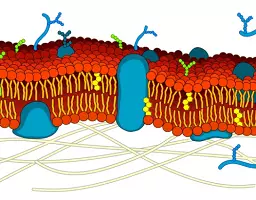What is PCR used for other than to detect SARS-COV-2?
PCR: The polymerase chain reaction
The initials PCR correspond to the English expression “polymerase chain reaction”, which translates as “polymerase chain reaction”. It was invented in 1983 by Kary Mullis who was awarded the Nobel Prize in 1993.

Polymerase is an enzyme whose function is to make copies of a DNA fragment from a known sequence. This well-known sequence, called the primer , primer or initiator, is a short chain DNA is added to the sample to which it is to perform PCR.
Thus, what is necessary for the polymerase chain reaction to occur is: the DNA sample to be analyzed, the polymerase enzyme, the primer with the DNA template sequence and the structural components of the DNA so that the enzyme can synthesize the copies that you want to obtain.
If the analyzed DNA sample contains a sequence complementary to that of the primer, then the chain reaction will occur and copies of the DNA segment to be obtained will be generated. Once the reaction is finished, it is verified if the result is positive by checking if DNA has been synthesized, or on the contrary, the sample only contains the initial fragments.
For this, a technique called gel electrophoresis is used , which allows molecules to be separated based on their size. In this way it is possible to determine if new copies of DNA have been produced, which would mean that the PCR is positive and the DNA contains the sequence of interest.
It is also possible to use PCR analysis to detect the presence of RNA sequences. The RNA is a nucleic acid having an intermediary between DNA and protein synthesis. Some viruses, such as HIV, influenza viruses, or SARS-CoV-2 have RNA instead of DNA as genetic material.
To carry out a PCR on RNA, a previous step of transformation of RNA to DNA is necessary by means of the reverse transcriptase enzyme, also called reverse transcriptase. For this reason, this technique is called RT-PCR, although dry PCR is usually used.
Sensitivity and specificity of the technique
PCR analyzes are characterized by high sensitivity and specificity. Sensitivity refers to the reaction that requires a small amount of DNA to occur, and this DNA may be partially degraded.
The sensitivity is related to false negatives, because if the test was insensitive sample may contain genetic material of the virus but the result would be negative, to the DNA amplification occur.
The specificity means that only a sample exactly matches the sequence provided in the primers should trigger DNA amplification, or otherwise a false positive would occur.
Common uses of PCR tests
As already explained, the PCR technique makes it possible to identify the presence of known DNA sequences (or RNA, in the case of some viruses) in a sample. This has important medical applications , as it allows a viral infection to be diagnosed before the patient shows symptoms.
Furthermore, in a single sample it is possible to detect the presence of several viruses, by adding the corresponding primers in a single PCR. Thus, it is common to use this technique to detect cases of HIV or Hepatitis B. One application of these tests is to verify the health of blood donors .
PCR tests are also used to detect hereditary genetic diseases associated with known DNA sequences. These tests can be performed on the parents, to find out if they are carriers of a disease, or performed on samples of amniotic fluid to analyze the DNA of the embryo.
In addition to its use in medicine, the PCR technique is very useful in archeology and paleontology , since its great sensitivity makes it useful when studying DNA remains preserved in mummified tissue, bone remains or even within amber (in which the plot of the Jurassic Park movies is based). As we explained in another article , this technique allows us to determine the pathogenic organism responsible for epidemics of past centuries, by analyzing the remains of genetic material that are preserved.
PCR is very useful in different fields of biological sciences, as it allows the DNA sequences present in a sample to be studied with precision. In biochemistry this is useful to study the presence of specific genes in bacterial populations , and the evolution that these genes have undergone. In Botany, it allows studying the evolution of different plant species, or of varieties within the same species. The latter has important applications in agriculture .
Finally, another use of PCR analysis is to determine the degree of kinship between two individuals . This requires a previous treatment of the sample in which the DNA is cut into small fragments by enzymes and these fragments are joined with PCR primers that are associated with polymorphic sequences that are different for each individual and inheritable. Thus, there is a correlation between these sequences in related individuals. This also allows the identification of samples of blood, saliva or other biological remains with the person to whom they belong, something very useful in forensic techniques to identify a corpse or the author of a crime.




